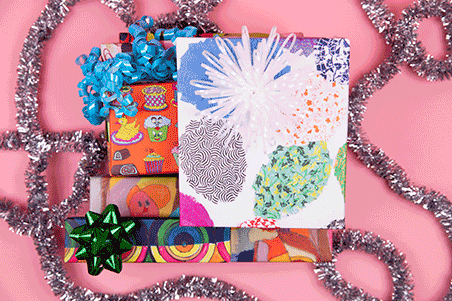Artist Corita Kent, ‘LOVE’ Stamp Designer, Dies at 67
- Share via
Artist Corita Kent, the former Los Angeles nun whose colorful works include the immensely popular “LOVE” postage stamp, died in her Boston home Thursday after a six-month battle against cancer. She was 67.
As with the stamp design, her art often carried--symbolically as well as literally--messages of hope, optimism and peace. Her works are displayed in about 40 museums worldwide, including the Metropolitan Museum of Art and the Museum of Modern Art in New York and the Los Angeles County Museum of Art.
Working in various mediums, but most skillfully in silk screens, she was delighted that her art was exposed to the masses--on billboards, book jackets, illustrations, posters, gift cards, T-shirts and even on a huge natural gas tank in her adopted hometown of Boston.
Born in Fort Dodge, Iowa, she moved to Los Angeles as a youngster. As Sister Mary Corita, she was a member of Immaculate Heart Community in Los Angeles for 32 years, but she gave up her Roman Catholic sisterhood in 1968 to re-enter the secular world. She had spent many of her years as a nun at Immaculate Heart College as head of the art department.
In 1966, when she had 150 one-woman shows in galleries, museums and universities throughout the country, she was named The Time’s “Woman of the Year.” During the same period, she continued her teaching and administrative duties at the Hollywood campus of the college.
By the time she left the community, she was famous in both the art world and in the ecumenical church movement. A vigorous and socially conscious woman, she also was a strong supporter of such causes as the United Farm Workers union, Amnesty International and the Women’s International League for Peace.
‘Reasons Are Very Personal’
“My reasons are very personal and very hard to explain,” she said in an interview at the time that she left the sisterhood. “It seems the right thing for me to do now. I think I’ve kind of reached the point where I want to do a different thing.”
Then on sabbatical leave in Boston, she made the city her home from that time on, but returned often to Southern California where she owned a gallery, Corita’s Prints in North Hollywood, which specialized in her works and sold them to the public and leading galleries and museums throughout the world.
Over the years, Kent created about 800 works of art, mostly serigraphs but also a large number of small water colors. When she first came to public attention, she was referred to as a member of the Op-Pop school, but an associate said that in later years she became both more mellow and more profound, while still bridging the gap between commercial and fine art.
Her abstractions, bright and simple in design, frequently used quotations from others or memorable phrases of her own creation as integral parts of the compositions.
Some of the better known are “We can create life without war,” “Love is hard work,” and “So far the crocuses have always come up.” The last was done for Physicians for Social Responsibility, and the message was carried on huge billboards around the country.
It was in Boston in 1971 that Kent created what is said to be the largest copyrighted design in the world--a painting on the side of the Boston Gas Co.’s huge natural gas tank. The enormous rainbow--six simple strokes of color arching across the 150-foot-high gas tank--has been a Boston landmark ever since.
Stamp a Best Seller
And the equally simple “LOVE” design--composed of six bright slashes of color--became an immediate best seller as a stamp, with more than 700 million issued at last count. On New Year’s Eve in 1984, when a 20-foot replica of the design was lowered from the Old Post Office in Washington, a crowd of 65,000 cheered and applauded. Although hers was the fourth in a series of five U.S. Postal Service stamps using love as a theme, the Kent design is generally considered the best known and most popular.
Kent, who used the single name Corita as her professional signature, wanted her work and message to be seen as widely as possible and did not object to what some artists would consider the commercial exploitation of her creations, but she was highly principled about how her art was used and how it was promoted.
She boycotted the official ceremony celebrating the issuance of her 22-cent stamp in April, 1985, because the government held the event on the set of the “Love Boat” television show in Burbank.
She said at the time that she did not approve of the “Love Boat” show because “the TV definition of love is nothing very deep, and everything gets resolved in an hour. I think it’s dangerous to educate people that way--that love happens that fast, that troubles are resolved that easily.”
She is survived by a sister, Sister Mary Ruth, and a brother, Mark Kent of Seattle. A memorial service is being planned for Los Angeles, but the time and place have not yet been scheduled.
More to Read
The biggest entertainment stories
Get our big stories about Hollywood, film, television, music, arts, culture and more right in your inbox as soon as they publish.
You may occasionally receive promotional content from the Los Angeles Times.










